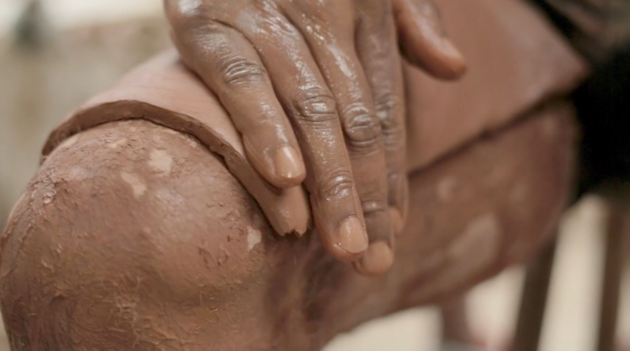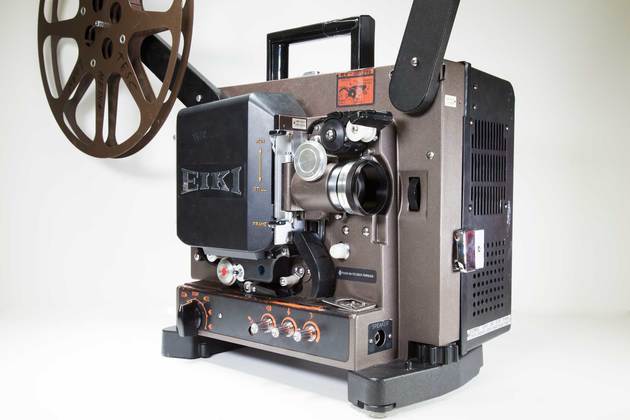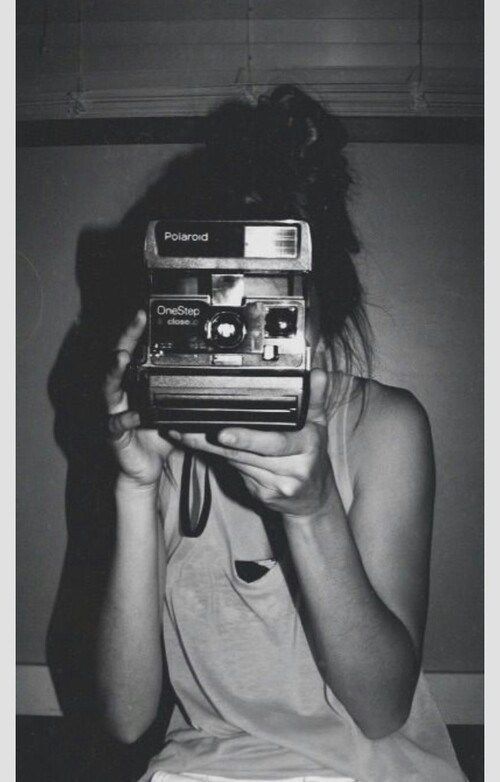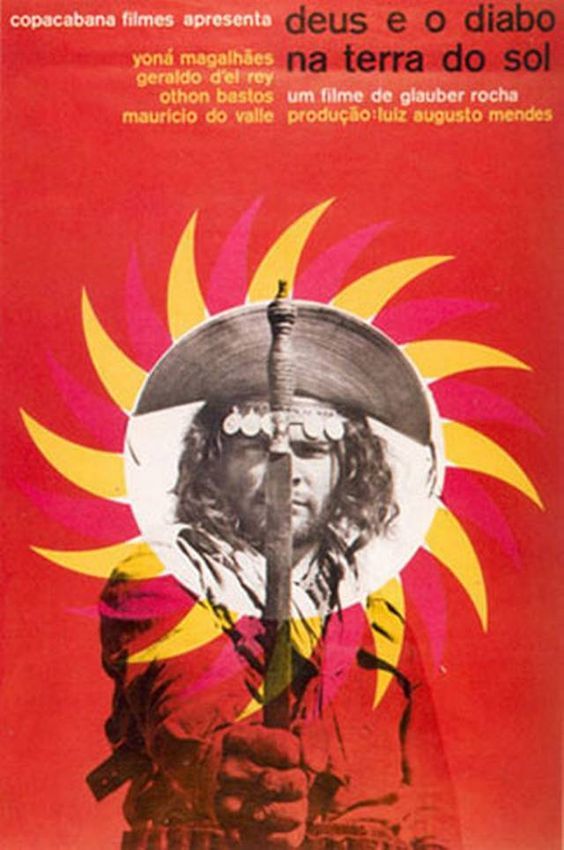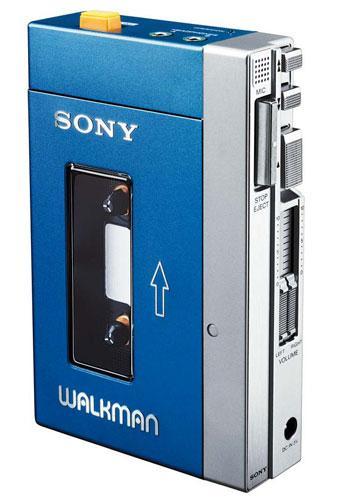LB/Online Video Festival
Every week, starting on April 28th, Luciana Brito Galeria published a new video, a new experience, which will be available on our website indefinitely. So you can watch as many times you wish, whenever you like. The idea was to propose a reflection on a significant set of works both by artists who are represented by us, and by others that we consider relevant to the proposal. This week we published below the video “Photokinetic" (2020), by Héctor Zamora (Mexico). Don’t miss!
Curator: Analivia Cordeiro
Curatorial text: read here
Homenagem a George Segal, 1985
Videoperformance
Betacam transferred to digital
Directed by Walter Silveira
Sound: Cid Campos
Black and white
Duration: 03’05”
"Homenagem a George Segal" visual poem made in 1975 - which, ten years later, became Lenora's first video performance, under the direction of Walter Silveira. Here, Lenora develops the daily action of brushing teeth. His hand and face, however, are completely covered by toothpaste, in a kind of "paralysis".
Excerpt from the text ISSOÉOSSODISSO, by curator Priscila Arantes for the homonymous exhibition catalog. Paço das Artes, 2016.
Lenora de Barros
1953, São Paulo, SP, Brazil. Lives and works in São Paulo, SP, Brazil.
Lenora de Barros has a degree in linguistics from the University of São Paulo. She is a great exponent of visual poetry, a language whose origins date back to the concrete poetry movement of the 1950s, a period also marked by the genesis of a strong constructivist and avant-garde approach in Brazilian art. The artist’s practice began in the 1970s, as a result of these strong art movements of previous decades, where word and image were presented as her initial materials. Since then, her focus has been on exploring the possibilities of these languages’ codes, which she articulates through various media such as video, performance, photography, sound installation and the construction of objects.
-

Héctor Zamora, Photokinetic, 2020
-
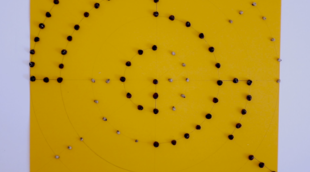
Re-Construtivo, 2020
Analivia Cordeiro
-

Forest Warrior – Xondaro Ka’aguy Reguá, 2020
ANGRY duo (Bruno Silvia e Gabe Maruyama)
-

Ouragualamalma, 2020
Éder Santos
-
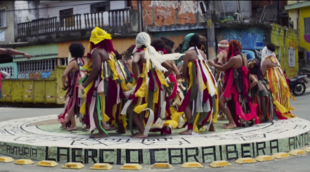
Encruzidança, 2018
Kelly Santos e Naná Prudêncio
-

Vidbits, 1974
Alvy Ray Smith
-

Do Peito ao Prumo, 2020
Tothi dos Santos
-

The Trip, 1976
José Roberto Aguilar
-

Sunstone, 1979
Alvy Ray Smith
-

Tudo Está Dito, 1974
Augusto de Campos
-

Hommage a Mondrian, 1972
Jean Otth
-

Flesh I and Flesh II, 2004
Analivia Cordeiro
-

Limiar, 2015
Regina Silveira
-

Homenagem a George Segal, 1985
Lenora de Barros
-
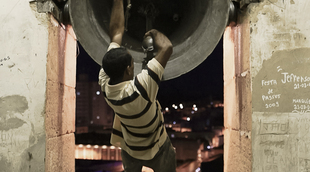
Bronze Revirado, 2011
Pablo Lobato
-

Landscape for White Squares, 1972
Anhtony McCall
-

VT Preparado AC/JC, 1985
Walter Silveira e Pedro Vieira
-

Places of Power, Waterfall, 2013
Marina Abramovic
-

Una Milla de Cruces Sobre el Pavimento, 1979
Lotty Rosenfeld
-
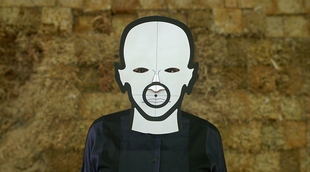
Alvos, 2017
Lenora de Barros
-

Ituporanga, 2010
Caio Reisewitz
-

Nas Coxas, 2018
Héctor Zamora
-
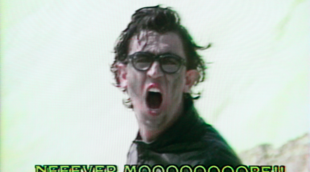
Non Plus Ultra, 1985
Tadeu Jungle
-

Há Casas, 2018
Rochelle Costi
-

0=45, 1974
Analivia Cordeiro
-

Dormindo Acordada, 2011
Fabiana de Barros & Michel Favre
-
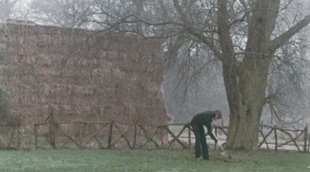
Earthwork, 1972
Anhtony McCall
-

O Pulsar, 1975
Augusto de Campos
-

Actualidades / Breaking News, 2016
Liliana Porter
-

Campo, 1976
Regina Silveira
-

Tumitinhas, 1998
Eder Santos
-

Corda, 2014
Pablo Lobato
Here you will see historical videos. While some are being shown practically for the first time, others are well-known in the history of art. In its more than 50 years of existence, video art has been a media characterized by its enormous flexibility. The formats of these videos have gone through more than ten variations: since the beginning, with the boxy U-Matic or Betacam cassettes, up to the small, modern-day pen drives with their mammoth capacities. It is interesting to learn about the transformations these artworks have undergone, as the current accessibility to technology, coupled with the possibility of knowing the original sources, allows us to understand that it was precisely these tools that led to the current format of our world and our perception. This exhibition is aimed providing the spectator with knowledge about these now outmoded devices and formats, while pointing out how this awareness can help us to better understand the artistic results.
The means of showing these works has also varied a lot: today there are countless platforms ranging from cell phones, with their small dimensions, up to 4K Ultra HD projectors, of great size and exceptional quality. In this moment of social isolation, the video camera has become the main medium of visual communication, the only channel between us and the people with whom we want to communicate. With this in mind, we can evaluate the meaning of expressing oneself through a camera.
The use of the camera is now so generalized that we no longer perceive how much it modifies and conditions what we want to say. Now that it has substituted real physical contact, we can evaluate the meaning of how a person expresses him- or herself through a camera. We can understand, like never before, the way that artists have chosen to use the resources of video in these historical works, which, as pointed out above, are resignified today. In their own time, these were cutting-edge resources in the hands of only a few people, while today video technology is part of our everyday life.
Video imposes many rules on us. The main one is that everything we wish to express needs to be inside of a rectangle, present on all the video display devices, ranging from cell phone devices to large-format video projectors. Even so, besides the basic challenge of conveying a message, the filmmaker should somehow spur the spectator to imagine what is taking place outside the rectangle. It is a game within a dictatorship: the dictatorship of the rectangle. When we are forced to frame the world within a bidimensional rectangular space we condition our brain to think in this way and our perception is altered according to these standards. We see reality as something to be adapted to our main current instrument of expression: video.
The consequences of this rule go beyond the formal aspect: video art restored the frame to the artwork, which had formerly existed in painting, but since the early 20th century was being gradually eliminated by contemporary trends – for example, by art installations and conceptual art. The historical video art used the rules of classical art and had the same framed format as painting. In what sense was it innovative? This is a question for you to answer while watching the videos.
Video consists of visual content plus sound, while the real world offers us a wider range of sensory stimuli: smells, sensations on the skin, types of touching, and more. The big challenge for the artists, therefore, is to convey the richness and complexity of reality with the more constrained resources of this technology. It is intriguing to observe how the genius and talent of a given artist can arouse sensations in us that range outside the restrictive technical solutions and even human experience. Through this rectangle and these audiovisual resources, each artist creates a poetics and can compose a unique artwork. In each video featured in the show it is possible to catch sight of underlying historical and artistic aspects that reveal the prevailing mindset of each era in regard to the perception of art and the values that went into its making. For this reason, each of these artworks can be watched more than once, and at each opportunity a new perception will arise, just as it does in the case of paintings. While a painting presents a still image on canvas (a sort of screen), video presents the image in movement: the basic principle of video art.
Showing video art online is a legitimate medium for its exhibition, transmitting the work in its full artistic significance, since it was originally conceived to be shown in video format. Watching online can therefore provide a genuine and authentic exhibition experience, filling us with ideas and thoughts while wholly conveying the work’s high-quality poetics.
While watching the videos, you can allow yourself to be transported to the period in question: the 1970s, ’80s, ’90s or the 2000’s, while simultaneously observing their universal and timeless qualities.
Analivia Cordeiro, March 2020
-------------------------------------------------------------------------------------------------------------------------------
Analivia Cordeiro, PhD, Dancer, Choreographer, Video Artist, Architect and Body Language Researcher. Considered to be the first Brazilian Videoartist (1973), as well as a Computer-dance pioneer, she is also responsible for the creation of many multimedia works, the human movement notation software Nota-Anna and a system for literacy in Portuguese language. www.analivia.com.br
Soon you can follow the full program of the exhibition in this page




